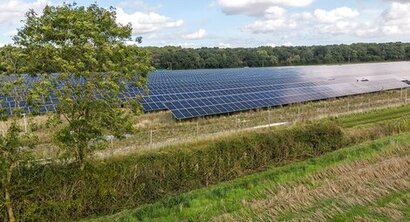
The approval of the solar farm will help to boost UK energy security while also reducing energy bills and helping to wean the country off natural gas. It will feed power into the national grid using the connection previously utilised by the demolished Cottam coal-fired power station, replacing almost a third of the plant’s capacity. The last remaining UK coal fired power station, Ratcliffe-on-Soar, will close at the end of this month.
“Today’s announcement is another step in the right direction towards a sustainably-powered solar nation, offering a more secure and affordable energy system” said Stephen Wilding, Director of Business Development at Solar Energy UK. “It is also another welcome confirmation of the new government’s support for the solar sector, in anticipation of the forthcoming Solar Roadmap, which will set the country on the path to reaching 50 gigawatts of solar capacity by 2030.”
With a capacity of over 50 MW, Cottam is a nationally significant infrastructure project (NSIP), meaning that it was considered by central government rather than a local authority.
The inspectorate accorded “little negative weight” to the loss of agricultural land, considering it both temporary and reversible.
Miliband’s approval accords with the recommendation of the Planning Inspectorate, which found that, “there is a convincing case” for Cottam, stating that is would make, “a significant contribution to the urgent need for low carbon electricity generation”.
The project will result in significant enhancements to biodiversity through the creation of permanent grassland, alongside new trees hedgerows and generous ecological buffer zones – including watercourses and marginal habitats. This is expected to result in substantial increase in wildlife habitats, expressed as biodiversity net gain of 77 percent for habitat units and 56 percent for hedgerow units.
“We are delighted to receive planning consent for Cottam, which demonstrates our commitment to delivering clean, reliable, and sustainable energy by working in partnership with communities, local authorities, and key stakeholders” added Bob Psaradellis, CEO of Cottam’s developer, Island Green Power. “The project will play a vital role in supporting the UK’s transition to a low carbon economy, generating enough clean, renewable, and secure energy to power 180,000 households annually.”
A total of seven NSIP-scale solar farms have now secured consent. The others are Little Crow (150 MW), Cleve Hill (373 MW), Longfield (420 MW), Mallard Pass (350 MW), Gate Burton (500 MW) and Sunnica (500 MW) – the latter three all being approved shortly after the general election. Their combined capacities come to just under 2,900 MW – about 15 percent of the UK’s current installed capacity, both on rooftops and on the ground.
A total of 24 other NSIP solar farms are in the pre-application stage, with three under examination and decisions on another two – Ecotricity’s Heckington Fen and Island Green Power’s West Burton project – expected in the coming weeks. Yet more are at less advanced stages of development.
For additional information:

